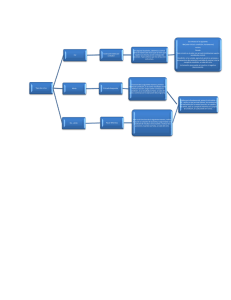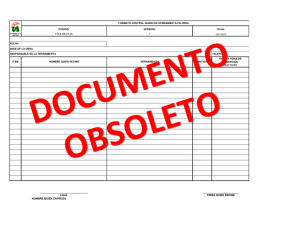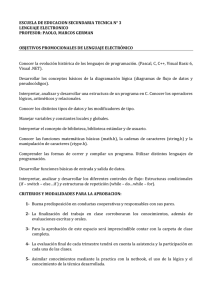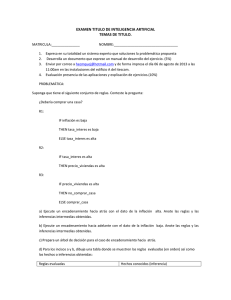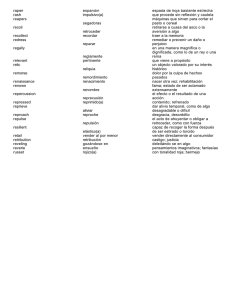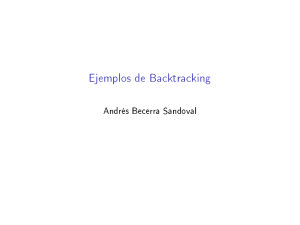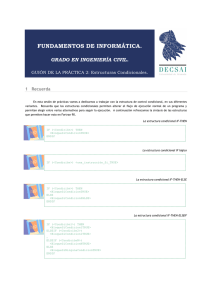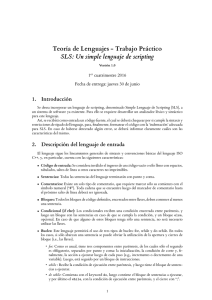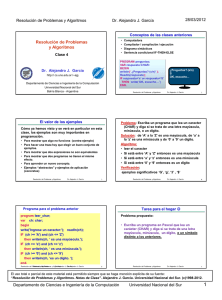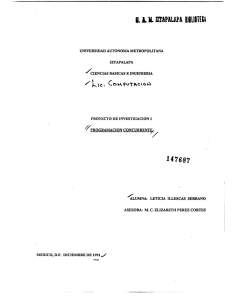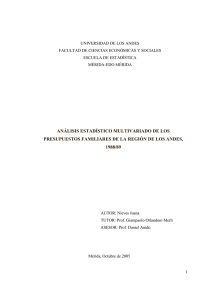Dinic, versiones GOTO y GOTOless
Anuncio
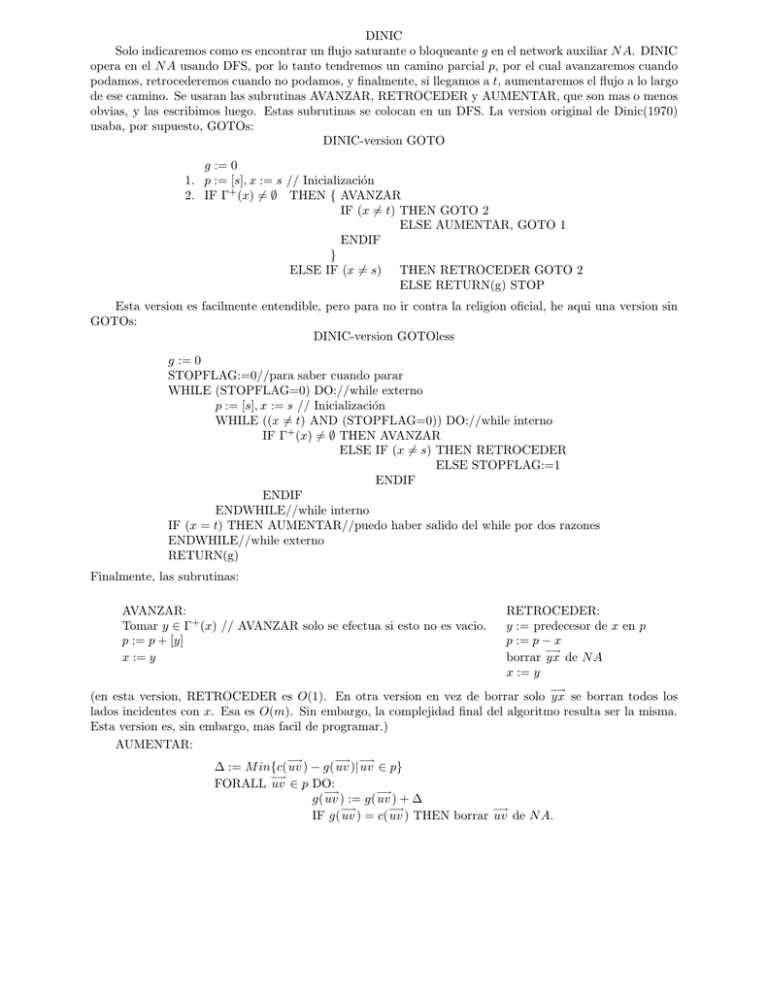
DINIC
Solo indicaremos como es encontrar un flujo saturante o bloqueante g en el network auxiliar N A. DINIC
opera en el N A usando DFS, por lo tanto tendremos un camino parcial p, por el cual avanzaremos cuando
podamos, retrocederemos cuando no podamos, y finalmente, si llegamos a t, aumentaremos el flujo a lo largo
de ese camino. Se usaran las subrutinas AVANZAR, RETROCEDER y AUMENTAR, que son mas o menos
obvias, y las escribimos luego. Estas subrutinas se colocan en un DFS. La version original de Dinic(1970)
usaba, por supuesto, GOTOs:
DINIC-version GOTO
g := 0
1. p := [s], x := s // Inicialización
2. IF Γ+ (x) 6= ∅ THEN { AVANZAR
IF (x 6= t) THEN GOTO 2
ELSE AUMENTAR, GOTO 1
ENDIF
}
ELSE IF (x 6= s) THEN RETROCEDER GOTO 2
ELSE RETURN(g) STOP
Esta version es facilmente entendible, pero para no ir contra la religion oficial, he aqui una version sin
GOTOs:
DINIC-version GOTOless
g := 0
STOPFLAG:=0//para saber cuando parar
WHILE (STOPFLAG=0) DO://while externo
p := [s], x := s // Inicialización
WHILE ((x 6= t) AND (STOPFLAG=0)) DO://while interno
IF Γ+ (x) 6= ∅ THEN AVANZAR
ELSE IF (x 6= s) THEN RETROCEDER
ELSE STOPFLAG:=1
ENDIF
ENDIF
ENDWHILE//while interno
IF (x = t) THEN AUMENTAR//puedo haber salido del while por dos razones
ENDWHILE//while externo
RETURN(g)
Finalmente, las subrutinas:
AVANZAR:
Tomar y ∈ Γ+ (x) // AVANZAR solo se efectua si esto no es vacio.
p := p + [y]
x := y
RETROCEDER:
y := predecesor de x en p
p := p − x
−→
borrar yx de N A
x := y
−→
(en esta version, RETROCEDER es O(1). En otra version en vez de borrar solo yx se borran todos los
lados incidentes con x. Esa es O(m). Sin embargo, la complejidad final del algoritmo resulta ser la misma.
Esta version es, sin embargo, mas facil de programar.)
AUMENTAR:
−→
−→ −→
∆ := M in{c( uv ) − g( uv )| uv ∈ p}
−→
FORALL uv ∈ p DO:
−→
−→
g( uv ) := g( uv ) + ∆
−→
−→
−→
IF g( uv ) = c( uv ) THEN borrar uv de N A.
